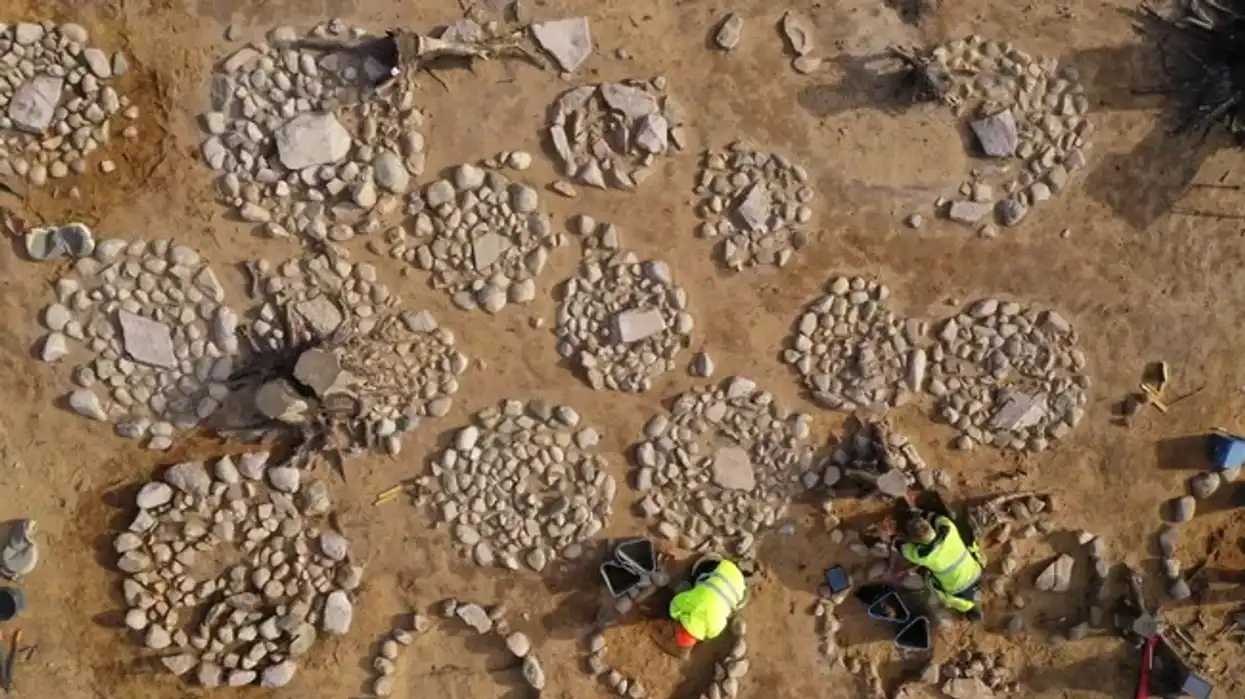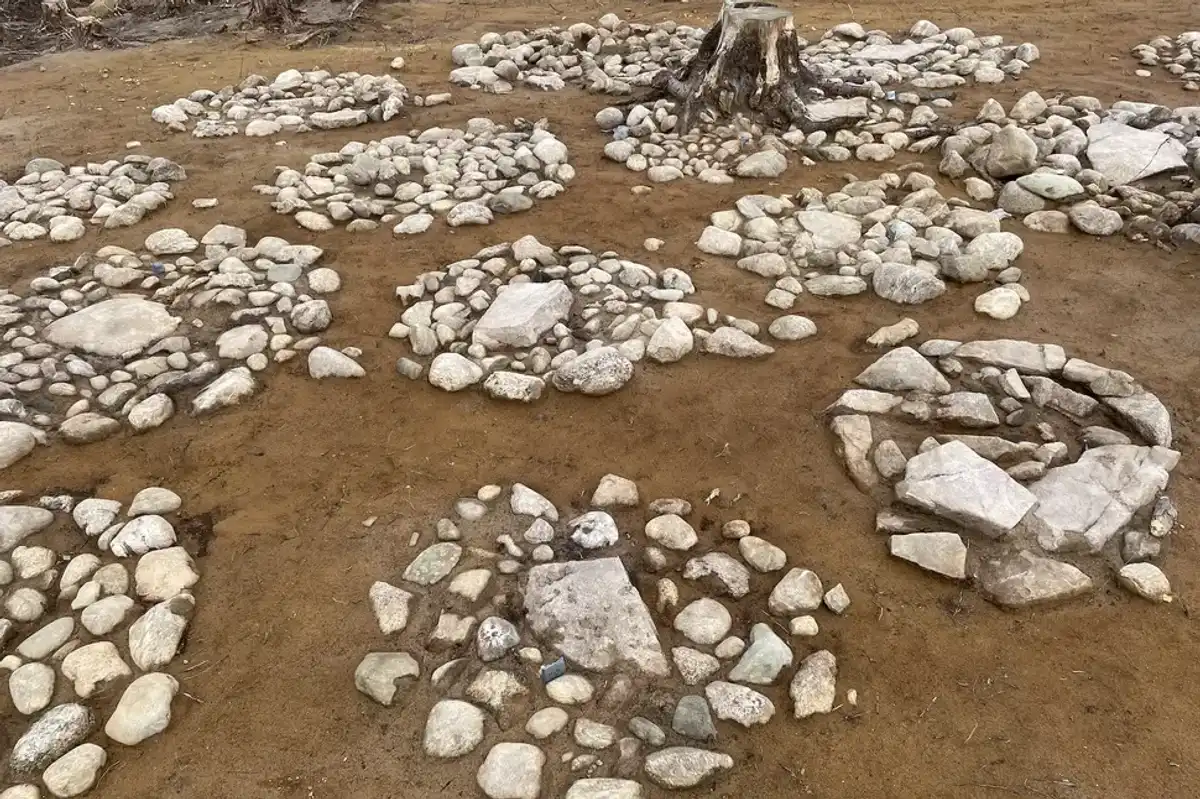Science & Tech
Harriet Brewis
Jul 10, 2024

Experts are trying to work out why so many children were buried at the site in Norway
(Museum of Cultural History, University of Oslo)
A series of ancient stone formations unearthed in Norway have led to a heartbreaking and perplexing discovery.
Archaeologists uncovered the circles of meticulously placed Bronze and Iron Age stones last year near the city of Fredrikstad, which lies around 50 miles (80 kilometres) south of Oslo.
The 2,500-year-old stone constructions, which measure up to 6 feet (2 metres) across, were placed together like street cobblestones but were buried a few inches below the ground.
"They've lain here as a secret until we found them," Guro Fossum, of Norway's Museum of Cultural History, told Science Norway. "We uncovered one after another and ended up with 41 round stone formations."
However, the strange structures themselves aren’t the real source of interest here. Rather, what was buried beneath them is what has truly stunned the experts.
New analysis of the site has revealed that almost all of the stone circles mark the graves of children who died between 800 and 200 BC.
Many of these were infants, while others ranged from three to six years old, Live Science reports.
"The dating show that the burial site was used over a long period, so they couldn't all have died in the same natural disaster or outbreak of disease or epidemic," Fossum pointed out.
A separate statement published by the museum noted that the site’s high concentration of ancient children’s graves was strange and unique.
The experts stressed that the rate of infant mortality was undoubtedly high at the time but, otherwise, they currently have no explanation for the graves.

Fossum and her colleagues have now extracted important samples and artefacts from the site, which include pieces of pottery and what may be a metal brooch.
"Analyses of the pottery fragments can tell us a lot," Fossum said. "It doesn't appear that all the vessels were containers for burnt bones; some were placed between the graves, and we are very curious about what was inside them."
In addition, the area surrounding the ancient graveyard is dotted with rock carvings that describe voyages and sun worship, according to the museum’s statement.
During the Nordic Bronze and Iron Ages, the dead were typically cremated on pyres. Any remaining bones were either buried or scattered, Fossum further explained.
A flat layer of stones laid out in a spiral or wheel pattern was then often placed over the cremation site, she added.
Still, she stressed, the burial ground at Fredrikstad is unusual.
"The graves are very close together," she said. "They must have been in an open landscape, with thoroughfares nearby, so everyone would have known about them.
“Cooking pits and fireplaces around the site suggest that gatherings and ceremonies were held in connection with burials."
Moreover, the graves were meticulously crafted. "Each stone was sourced from a different location and placed precisely in the formation," she pointed out. "We wondered who put in so much effort."
Yet, she conceded that some of the mystery had been answered through the identification of the burial site’s occupants.
"They were small children's graves," she said. "This was done with so much care."
Sign up for our free Indy100 weekly newsletter
How to join the indy100's free WhatsApp channel
Have your say in our news democracy. Click the upvote icon at the top of the page to help raise this article through the indy100 rankings
Top 100
The Conversation (0)













